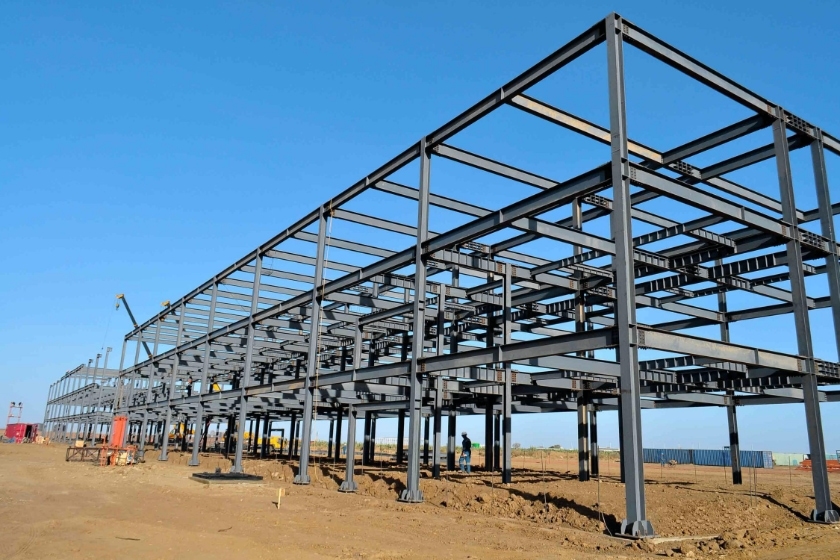Pioneering Approaches in Structural Engineering: What Lies Ahead?

The field of structural engineering is a vital and ever-evolving field that serves as the cornerstone of today's construction. It encompasses the creation, evaluation, and upkeep of various structures, varying from residential buildings to tall buildings, bridges to stadiums. For anyone curious about what structural engineering entails, this guide delves into its essential components and highlights the key role of structural engineers in ensuring that our built environment is secure and sustainable.
As we explore the leading-edge techniques that are shaping the next generation of structural engineering, we will examine the innovative practices that are changing urban landscapes worldwide. From structural engineer Surrey -adaptive designs to the integration of sustainable materials, the industry is regularly evolving to meet the needs of modern architecture and environmental concerns. Join us as we venture into the dynamic trends that are set to shape the field of structural engineering in the next few years, and uncover the strategies that engineers utilize to address challenging design challenges while emphasizing safety and efficiency.
Understanding Structural Engineering
Structural engineering is a essential branch within the scope of civil construction that focuses on the development and examination of structures that bear or resist loads. This covers a vast variety of structures, including skyscrapers, overpasses, towers, and underground routes. Structural engineers must ensure that these structures are secure, stable, and long-lasting while also satisfying design and practical criteria. By grasping the characteristics of materials and the loads acting on structures, they can create designs that lower the possibility of breakdown.
The function of engineers in this field extends past simply design; they collaborate with architects and other experts to integrate engineering and design elements seamlessly. This cooperation is essential to tackle complex design challenges and to optimize both the efficiency and aesthetics of a project. Engineers must take into account various factors such as load analysis, material properties, external conditions, and local standards, effectively balancing functionality and innovation in their designs.
As society evolves, so too does the realm of structural engineering. Emerging innovations and cutting-edge materials serve a pivotal role in shaping contemporary methods. Engineers are increasingly adopting advanced software tools and 3D modeling techniques to enhance their development processes, resulting in more efficient and accurate outcomes. Furthermore, there is a increasing emphasis on sustainability, where engineers are endeavoring to develop sustainable design practices that minimize environmental impact while boosting structural performance.
Advancements and Issues in the Domain
Structural engineering is witnessing a surge in new methodologies that enhance both the safety and eco-friendliness of modern infrastructure. Advanced materials such as reinforced polymers and autonomous repair concrete are paving the way for more resilient designs that can withstand environmental pressures. Additionally, the integration of intelligent systems into infrastructure allows for real-time monitoring of the soundness of facilities, enabling immediate responses to possible concerns. These advancements not only improve the lifespan of structures but also contribute to a more green construction industry by lessening waste and resource utilization.
However, these advancements come with their own set of difficulties. The rapid pace of technological change often outstrips the ability of educational programs to adapt, resulting in a skills gap within the workforce. Moreover, the implementation of new materials and technologies requires rigorous testing and regulatory approval, which can delay projects and inflate budgets. Structural engineers must navigate these hurdles while maintaining the highest standards of security and compliance, making perpetual training and adaptation essential components of their profession.

In addition to issues related to materials and technology, structural engineers are also tasked with tackling the complexities of climate change. Rising sea levels, increased frequency of extreme weather events, and transforming environmental conditions demand novel architectural solutions that prioritize resilience. Engineers must not only create structures that are attractive and functional but also ensure they are adaptable to the changing climate. Balancing these conflicting requirements will be crucial as the field of structural engineering progresses, paving the way for a future that embraces both advancement and sustainability.
The Prospects of Structural Engineering
As we project into the future, the future of structural engineering is poised to welcome transformative technologies that will transform the field. One of the most important trends is the growing integration of sophisticated software tools and AI. These technologies allow structural engineers to simulate various conditions, improve designs, and identify potential issues before construction begins. With advanced modeling capabilities, engineers can create more efficient and durable structures that meet the ever-changing demands of urban environments.
Sustainability will play a key role in the evolution of structural engineering. The shift towards eco-friendly design is not merely a fad, but a necessity as society becomes more aware of environmental impacts. Structural engineers will increasingly employ sustainable materials and novel construction methods, reducing waste and energy consumption. Furthermore, the adoption of circular economy principles in construction will force engineers to revise design strategies to foster recyclability of materials.
Lastly, the focus on durability and safety in the face of natural disasters will shape the next changes in structural engineering. As climate change brings more frequent and extreme weather events, structural engineers will need to create buildings and infrastructure that can endure these challenges. This involves not only designing quake-proof buildings but also constructing adaptive structures that can cope with flooding, hurricanes, and other extreme circumstances. By focusing on safety and resilience, the field of structural engineering will boost the strength of our built environment.
